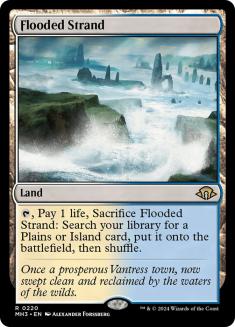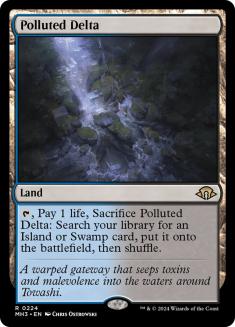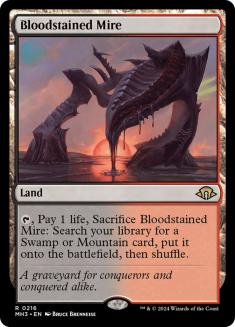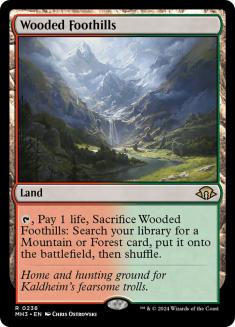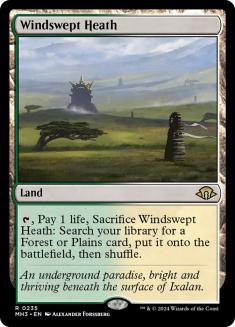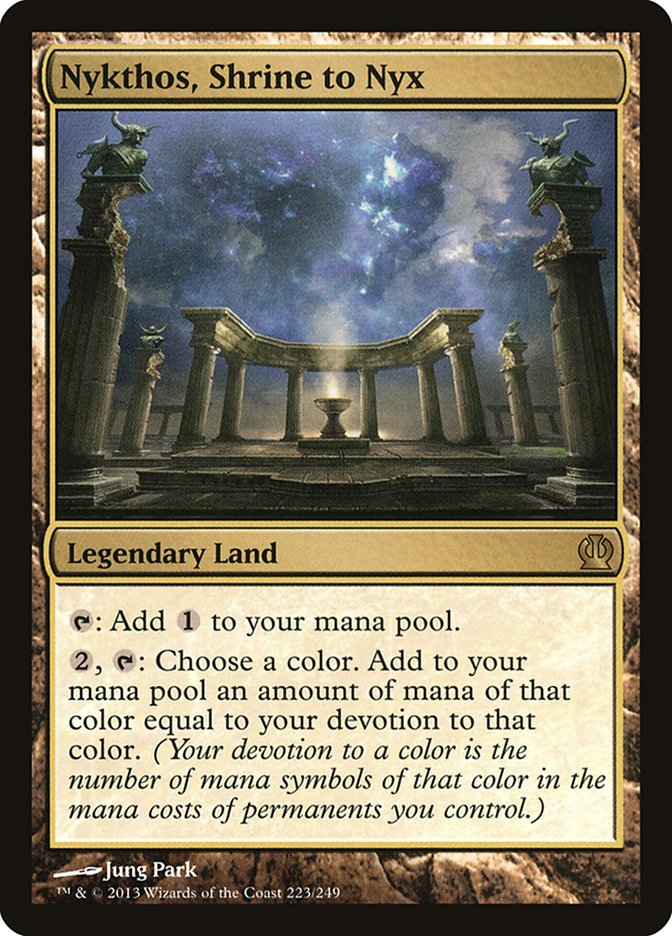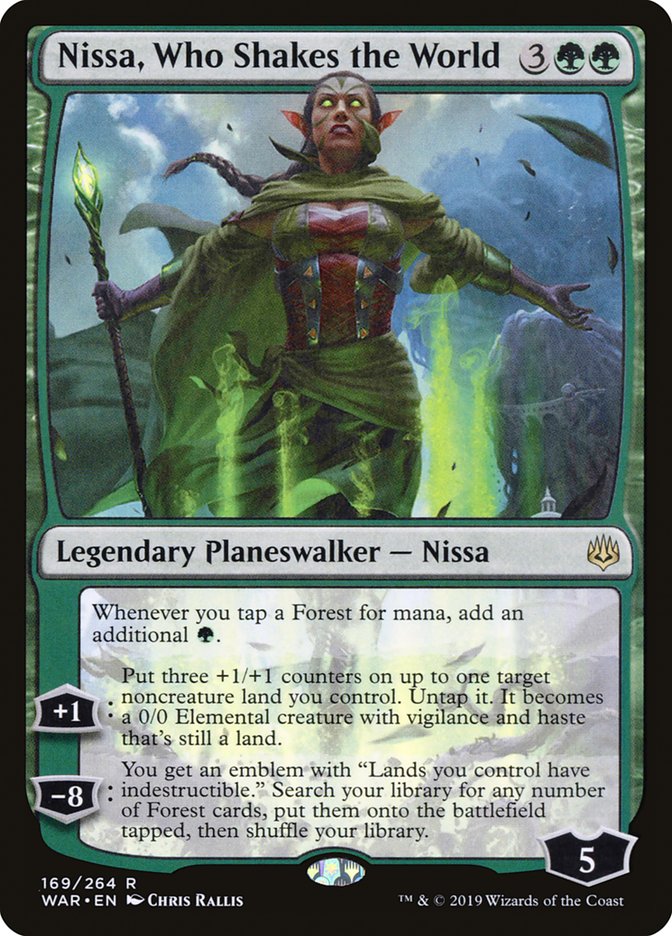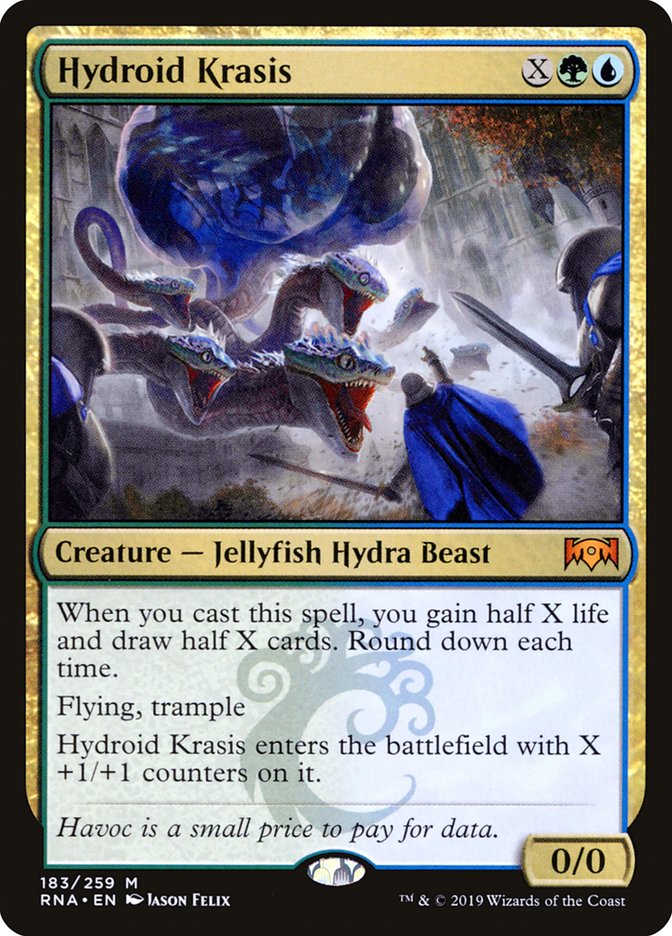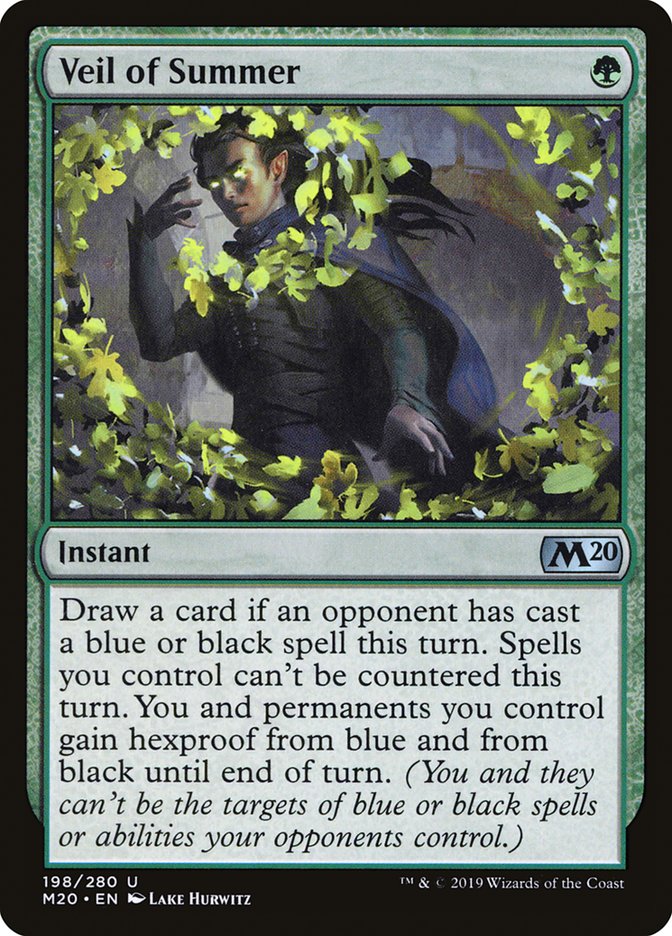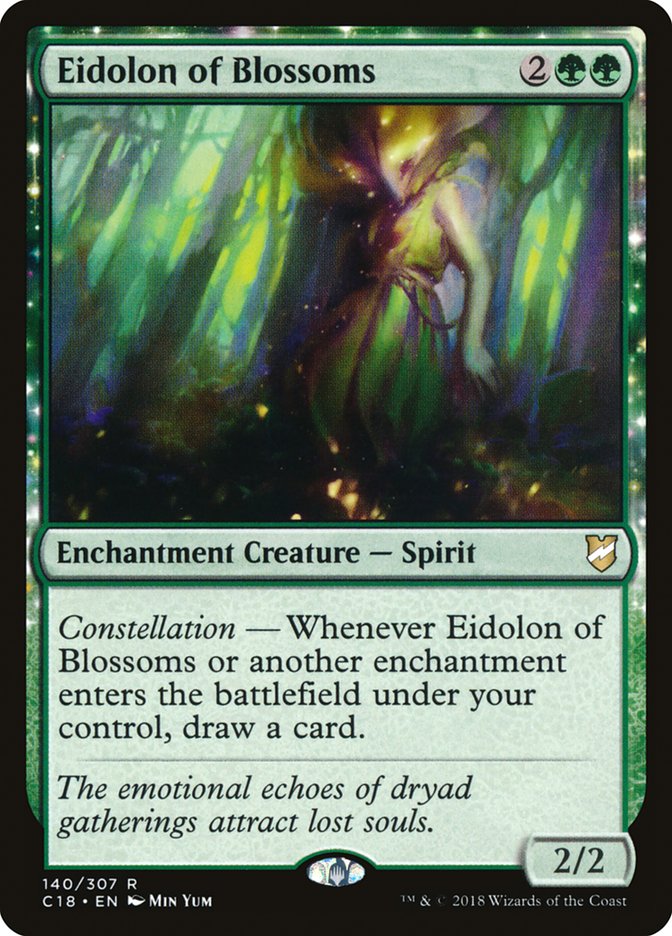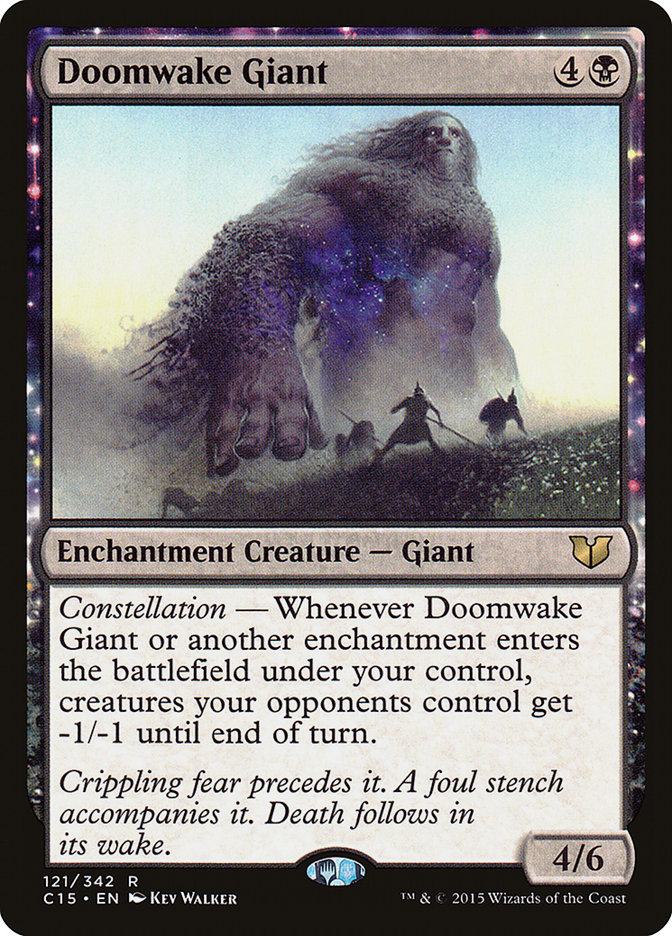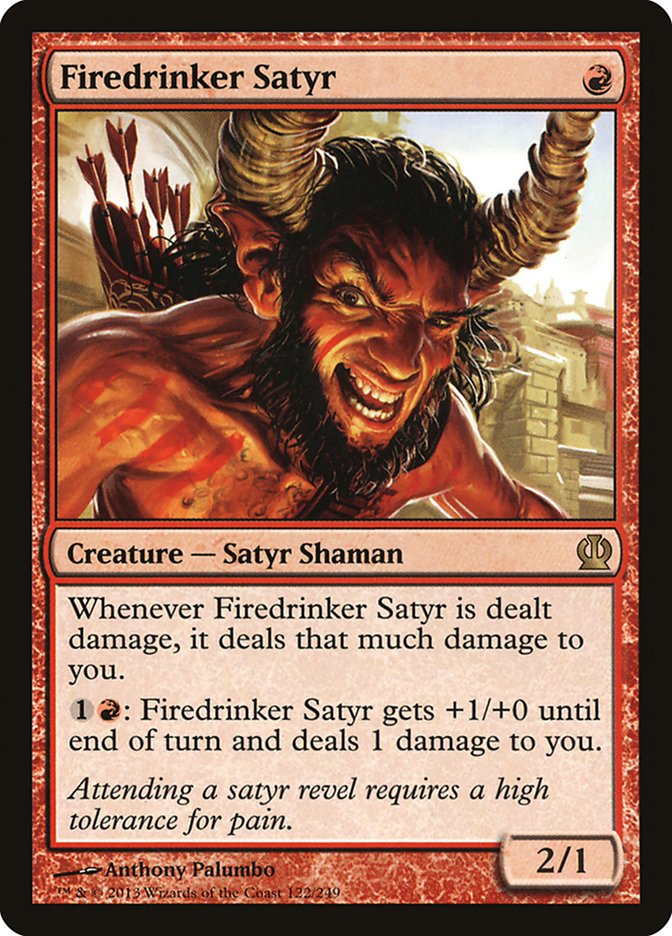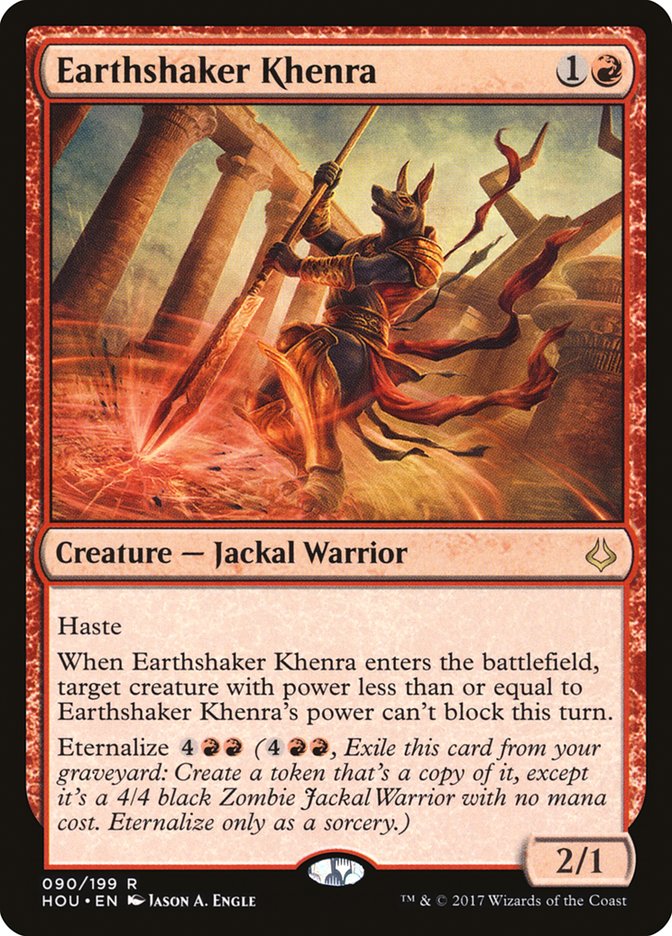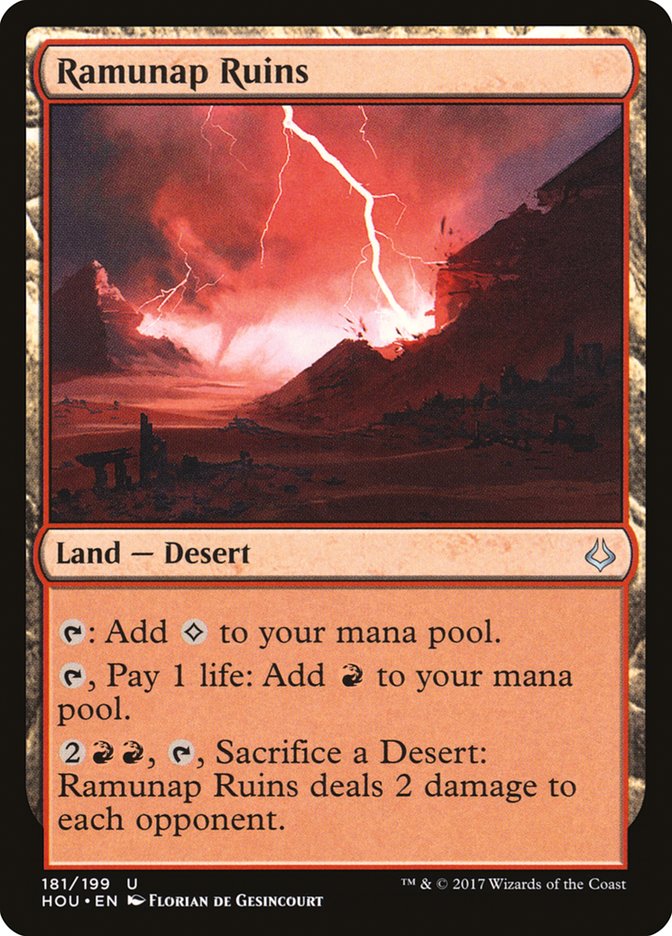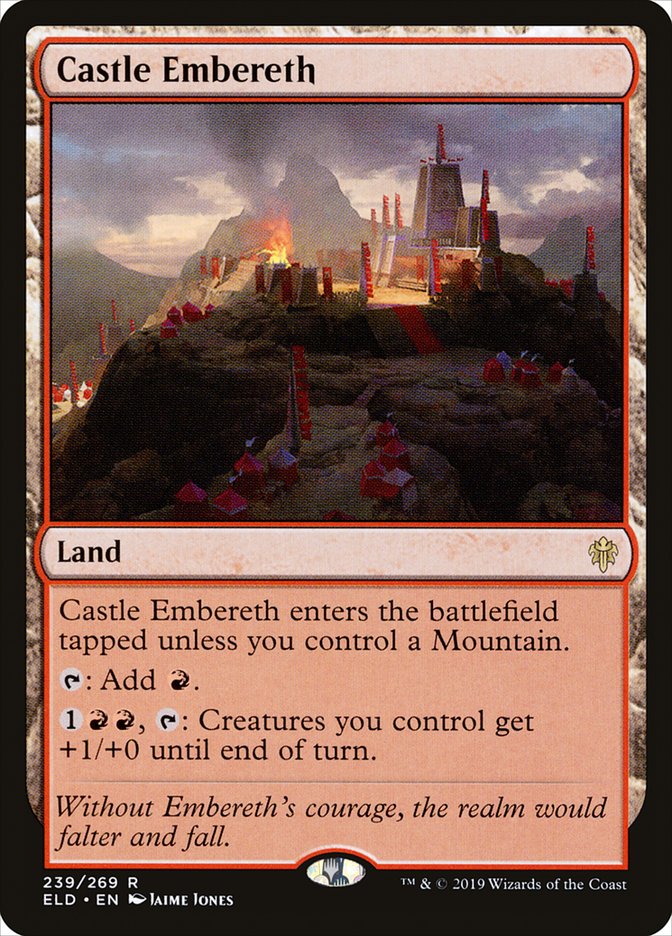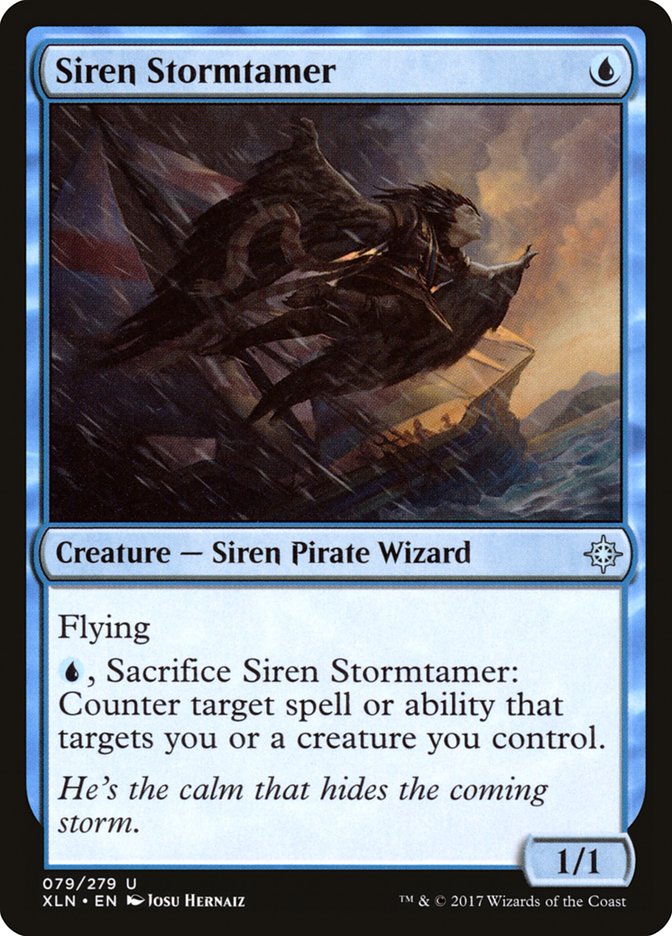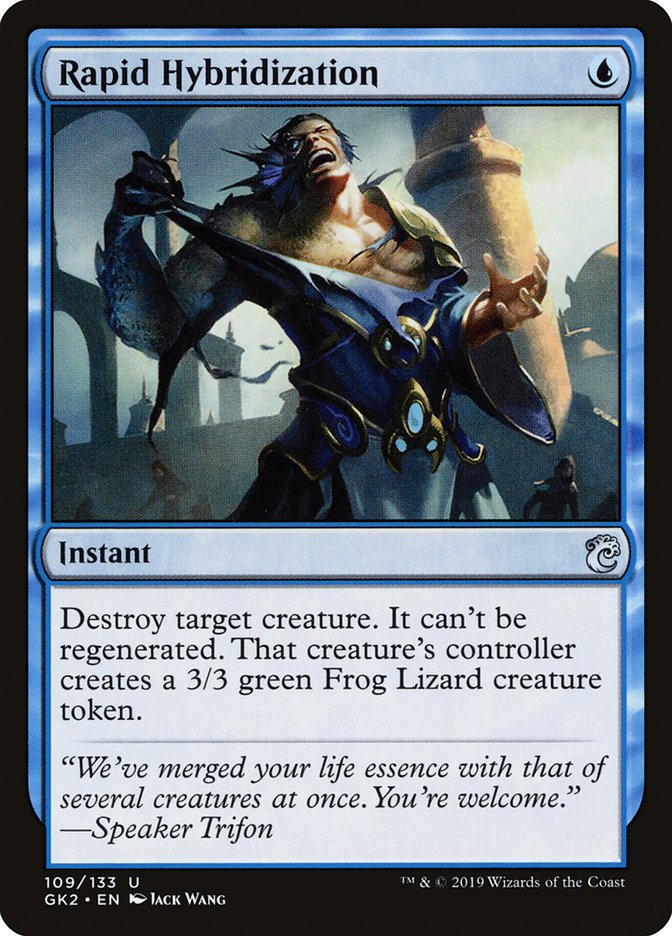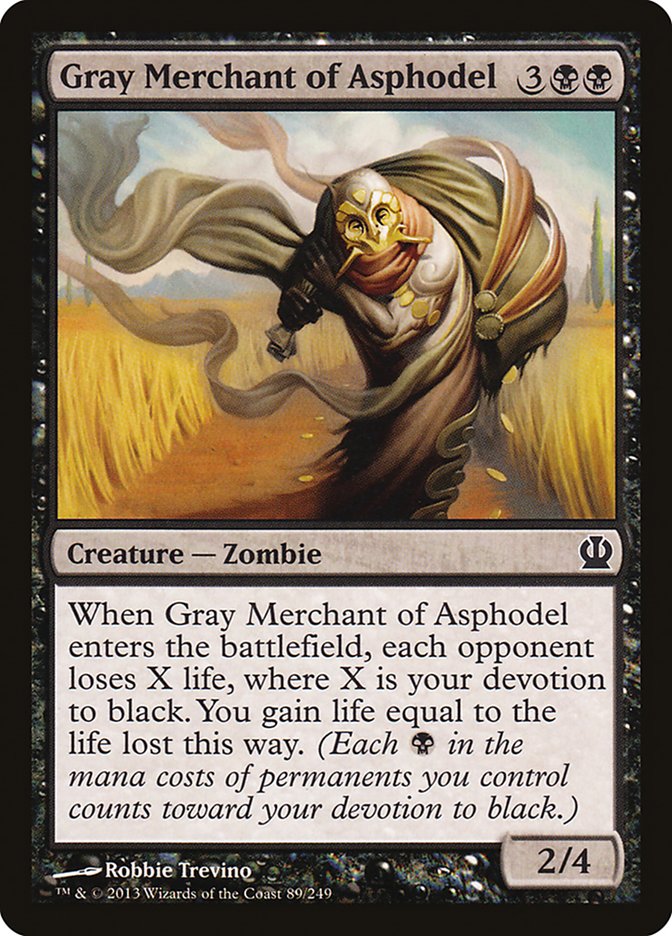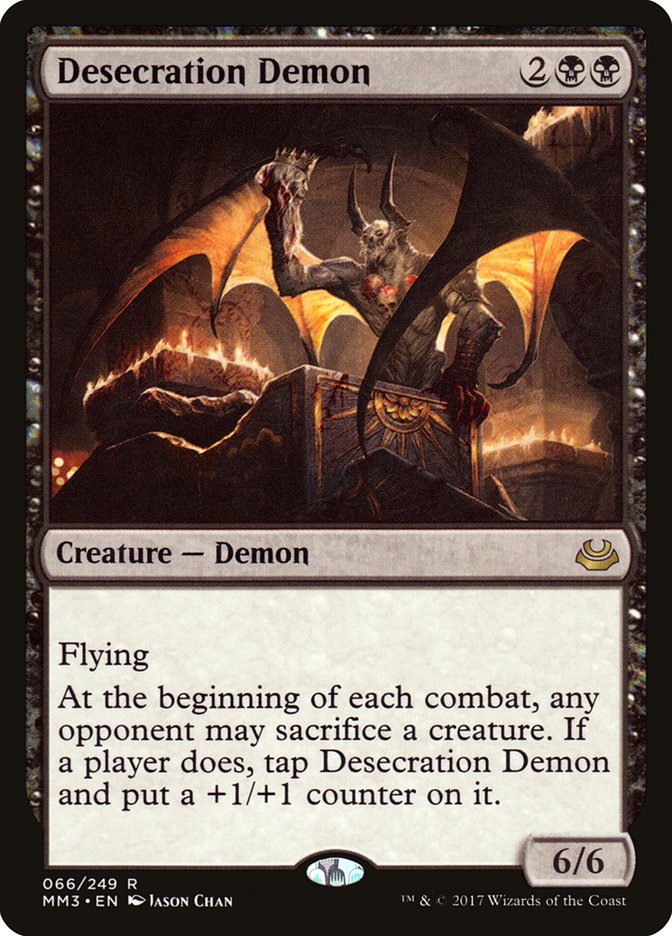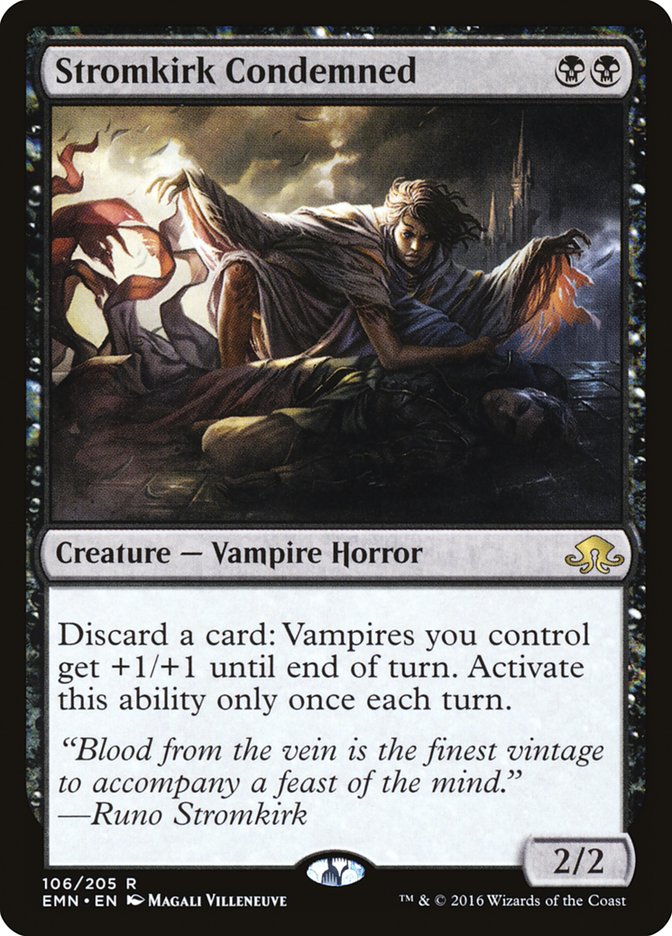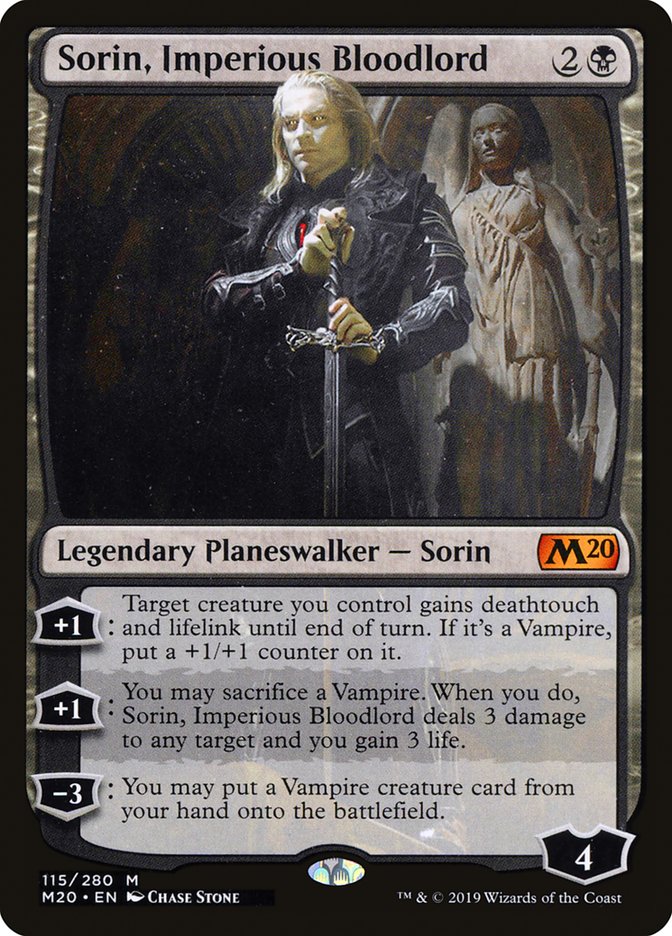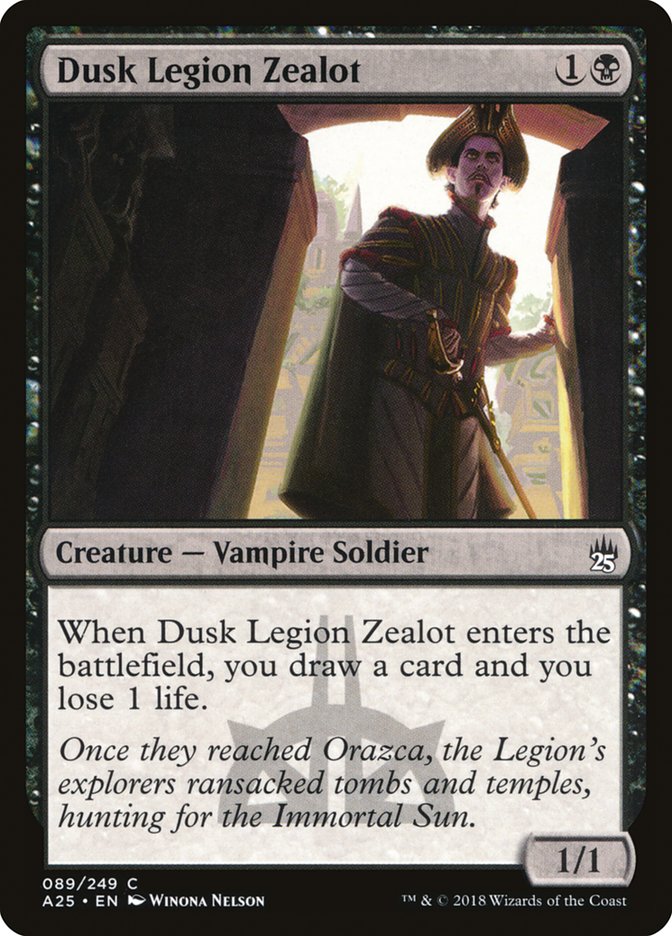As someone who’s been around Magic for a while, I tend not to get too excited by new announcements. I’ve seen everything from powerful new cards to major rules changes to overhauls to Organized Play in my time, and my reaction is typically muted, since no matter what the change is, my job is to simply operate in the new world as best I can, win matches, and help others do the same.
But something about Pioneer has me hooked. Maybe it’s because Pioneer mostly covers the sets I’ve played with at the highest levels, whereas Modern mostly covered cards I played with as a local grinder. Maybe it’s because I’m excited to see the last nail in the coffin for Legacy, a format I’ve loathed for quite some time.
These factors are certainly at play, but I think what excites me most about Pioneer is the Banned List. Starting with just the five fetchlands printed since Return to Ravnica was a great choice, as [author name="Tom Ross"]Tom Ross[/author] elaborated on last week, and to me represents a huge shift in how we need to evaluate cards.
Fetchlands have been so ubiquitous since they were first printed in Onslaught that they’ve essentially poisoned every format they’ve been legal in since, making it far too easy to fix your mana, manipulate the top of your library, and fill your graveyard, among other benefits. Without them, Magic is a very different game, and I’m excited to figure out exactly how some of the most powerful cards in Magic’s history are affected by this new context.
That said, we’re still playing Magic, and there are some basic principles we can rely on. Personally, in a new format, the first thing I look at is mana. More specifically, I want to generate a lot of mana – quickly and consistently. There will always be powerful cards to cast with that mana, but creating it in the first place is the difficult part.
After some digging through the format, the card that has caught my eye is Nykthos, Shrine to Nyx. The card saw significant play in the early days of Theros Standard, finding ideal partners in the various guild mana cards from Return to Ravnica block, but the format came to be dominated in large part by decks with heavy amounts of disruption, Azorius and Esper Control and Mono-Black Devotion, while Mono-Blue Devotion was lower-curved and had its payoffs in Thassa, God of the Sea and Master of Waves, and only played a single copy of the powerful land.
However, after Return to Ravnica Block rotated, Mono-Green Devotion variants were among the most successful decks in Standard, often splashing a color for powerful threats like Dragonlord Atarka. So we have a proven skeleton to work from in looking at those decks.
Standard isn’t quite large enough to have the requisite density of powerful, high-devotion cards in one color to always make Nykthos a consistent engine, while in Modern the decks that utilize Nykthos are too slow to contend with the other linear decks and not resilient enough to handle the quality of removal in the format. Pioneer splits the difference, being large enough to fill out these decks while lacking both the turbo-charged combo decks and the quality of removal – a perfect storm for devotion.
Before we get to the lists, let’s go over a few keys to building a proper Devotion deck.
- We want to establish a battlefield quickly so Nykthos starts generating extra mana as early as possible. This means a relatively low curve.
- We want ways to utilize the extra mana from Nykthos, but we can’t include too many high-casting-cost cards as that would raise the curve too much, so mana sinks are in high demand.
- We want a high density of permanents, which means we’re going to be low on interaction. But permanents that offer interaction, whether by removal or some other means, are great additions. Our sideboard will include lots of reactive cards to pivot to a less linear plan.
- We want sources of card advantage so we can slog through heavy-removal decks.
- We want some other payoff for being one color, whether it’s a powerful God or some other devotion card.
With these principles in mind, let’s start with the most obvious color, green:
Creatures (22)
- 4 Llanowar Elves
- 4 Elvish Mystic
- 2 Polukranos, World Eater
- 4 Sylvan Caryatid
- 2 Ulamog, the Ceaseless Hunger
- 2 Walking Ballista
- 4 Hydroid Krasis
Planeswalkers (5)
Lands (14)
Spells (19)
Sideboard

I played an earlier version of this deck on VS Live! last week and the results were promising to say the least. Leyline of Abundance creates very explosive draws by both adding free devotion and upgrading the mana creatures. The synergy with Leyline, on top of adding blue mana for the splash color, is what led me to playing Sylvan Caryatid over Burning-Tree Emissary, though the latter is undoubtedly more explosive. I’ve found this build plenty explosive as is and I’m more concerned with its consistency, and the Leyline-mana creature engine allows the deck to operate effectively without Nykthos – a huge boon to consistency.
Of course, Oath of Nissa and Once Upon a Time help us find Nykthos quite often, so the capability for generating huge amounts of mana is there. It’s just a matter of finding the right payoffs.
For payoffs, I can’t imagine better cards than Nissa, Who Shakes the World and Hydroid Krasis. Both are reasonable to cast even when you’ve been disrupted, which is important for the deck’s resilience. We don’t want to get stuck with a bunch of uncastable spells in hand because our opponent had a Supreme Verdict on Turn 4. Importantly, Nissa acts as both a threat in her own right and an enabler for more powerful draws, and is often a part of the deck’s most degenerate draws.
Between Hydroid Krasis; Polukranos, World Eater; and Walking Ballista, we have plenty of mana sinks, and the latter two also offer some much-needed interaction. Ballista importantly can stop the Saheeli Rai / Felidar Guardian combo that is having success in the early days of the format, while Polukranos is a game-ender against aggressive decks, both an early roadblock that eventually morphs into a Plague Wind.
Including a card like Ulamog, the Ceaseless Hunger was something I wanted to avoid, but ultimately acquiesced to given the popularity of the deck itself. In ramp mirrors, you need to have a supremely powerful effect to trump the other person, and I think Ulamog is that threat for Green Devotion variants.
Sideboards are always a crapshoot early in a format, but Veil of Summer and Negate are proven staples, while Oko, Thief of Crowns offers both interaction against annoying creatures in a deck that laughs off 3/3 Elks with ease and a threat against control decks that isn’t dependent on ramping early. Setessan Tactics underperformed in its time in Standard, but I think it plays very well with Nissa and want to try it here as a sweeper of sorts against aggro decks. Lastly, I think Questing Beast is underrated right now since it’s great at attacking the cheap planeswalkers that are seeing lots of play right now.
Brewing Green Devotion decks got me nostalgic for my favorite variant of them, a Constellation-themed list that splashed black for Doomwake Giant:
Creatures (24)
- 4 Llanowar Elves
- 4 Elvish Mystic
- 3 Courser of Kruphix
- 4 Eidolon of Blossoms
- 4 Doomwake Giant
- 1 Pharika, God of Affliction
- 4 Herald of the Pantheon
Planeswalkers (4)
Lands (15)
Spells (17)
Sideboard

This deck essentially swaps Hydroid Krasis for Eidolon of Blossoms. If left unchecked it can run away with a game with the card advantage it generates, and there are plenty of enchantments that the deck is happy to play. Herald of the Pantheon and Courser of Kruphix contribute to the mana engine and Doomwake Giant is a great piece of interaction, particularly against aggressive decks, though in your best draws it can control the battlefield against larger creatures as well. It’s particularly good at killing opposing mana creatures, giving this build an edge in the mirror if you can shut down their mana early.
Ultimately, the power of Doomwake Giant in a given metagame is what will make or break this deck, since it’s underpowered relative to the Simic list, but if people start playing a bunch of Hordeling Outbursts and Soldier of the Pantheons, this is a nice juke for Green Devotion aficionados.
Thinking about the Constellation theme got me brainstorming a similar idea in white, utilizing Starfield Mystic and Starfield of Nyx, but I couldn’t come to a shell that was worth publishing. Unfortunately it looks like white got short shrift in Pioneer. Losing Path to Exile was a huge blow since the other white removal is a huge drop-off in power level, and there isn’t another good devotion payoff in the color. Sorry, Plains fans, let’s move on to a better color.
The other Nykthos-centric Devotion deck that had success in Theros Standard was Mono-Red, starting with Kamiel Cornelissen’s Top 8 at Pro Tour Theros. There are plenty of great options for such a deck in Pioneer and Fanatic of Mogis is a powerful devotion payoff, so here’s my take:
Creatures (27)
- 4 Burning-Tree Emissary
- 4 Fanatic of Mogis
- 4 Firedrinker Satyr
- 4 Eidolon of the Great Revel
- 4 Glorybringer
- 3 Earthshaker Khenra
- 4 Goblin Chainwhirler
Planeswalkers (4)
Lands (10)
Spells (19)
Sideboard

Where Mono-Green Devotion variants are ramp decks at heart, this is an aggro deck that uses Nykthos, Shrine to Nyx to enable mid-game plays that are more powerful than anything a traditional aggro deck should be capable of. Fanatic of Mogis is incredible reach and punishes players for relying on building their defense on their own creatures rather than removal.
I’ve lowered the curve some from Cornelissen’s list, a nod to the fact that Pioneer will be faster than any Standard format. Firedrinker Satyr is my one-drop of choice since it acts as a mana sink. We want to get on the battlefield quickly and that means starting the curve at one.
Earthshaker Khenra is an awkward fit since it adds only one devotion, but it has several important functions here. First, it’s a two-drop that is playable with the mana created by Burning-Tree Emissary. Second, it can let our small, early creatures get in for some damage early, making it easier for the heavy hitters to finish the game. And lastly, the Eternalize ability is a great mana sink and functions as an additional heavy hitter itself.
There were two difficult choices here, one at the three-drop slot between Goblin Chainwhirler and Boros Reckoner and another between Glorybringer and Stormbreath Dragon. I chose Goblin Chainwhirler over Boros Reckoner since there aren’t really any synergies with Boros Reckoner, whereas Chainwhirler should be quite valuable in a format with lots of Llanowar Elves. I went with Glorybringer over Stormbreath Dragon because I thought the interaction was more valuable than the mana sink. Glorybringer, like Questing Beast, is great at attacking cheap planeswalkers and is currently an underrated card in the format.
The biggest draw to this deck is Chandra, Torch of Defiance. It’s a super-powerful card that fits perfectly, providing mana for your sinks, card advantage, and interaction. I’m concerned that all of our maindeck removal deals four damage, but they’re all such powerful cards that I’m willing to run it as is and make changes as necessary. There are plenty of good options in the sideboard to adjust to whatever the opponent is playing.
I also like how many utility lands are available to Mono-Red Devotion. Even with the other mana sinks, a 25-land aggro deck is prone to flooding, and both Ramunap Ruins and Castle Embereth play nicely with the deck.
Moving on, we arrive at the two colors most players think of when they think devotion: blue and black. These two decks dominated Return to Ravnica-Theros Standard and many players are hoping they can return to prominence in Pioneer. I myself was a devotee of the Cloudfin Raptor, so let’s start there:
Creatures (27)
- 4 Cloudfin Raptor
- 4 Thassa, God of the Sea
- 4 Master of Waves
- 1 Harbinger of the Tides
- 4 Siren Stormtamer
- 4 Merfolk Trickster
- 4 Tempest Djinn
- 2 Brazen Borrower
Lands (4)
Spells (29)

Notably, there are no copies of Nykthos, Shrine to Nyx here. There aren’t really great uses for the extra mana in blue and the color already gets two great devotion payoffs in Thassa, God of the Sea and Master of Waves.
What I’ve found awkward with the builds I’ve seen is the framing that they represent a merger of the old Mono-Blue Devotion deck with last season’s Mono-Blue Aggro archetype. There are cards that carry over from one to the other, as evidenced by the significant overlap between them in the above list, but this deck is still squarely in the Devotion mold rather than the Aggro one. Mono-Blue Devotion is an aggro deck, which is much less interactive than a tempo shell. As such, I’m not including any of the more expensive counterspells like Wizard’s Retort or Essence Capture.
In this deck, I want the cheapest interaction I can get so it doesn’t interfere with the regular gameplan of curving out, and the most flexible interaction since I never want my single interactive card to languish dead in my hand. Spell Pierce and Rapid Hybridization fit the bill there much better than a card like Dive Down.
Of the other new cards, Siren Stormtamer is the most exciting addition. Mono-Blue Devotion has always lived on protecting its key threats, Thassa and Master of Waves, and Stormtamer is excellent in that role while still filling the curve nicely in the vein of Judge’s Familiar. Tempest Djinn represents a significant upgrade on Nightveil Specter as a major threat in and of itself, Merfolk Trickster offers more flexible interaction than Tidebinder Mage, and Curious Obsession offers card advantage this deck lacked.
We also get access to Brazen Borrower and Harbinger of the Tides, two solid aggressive creatures that shoehorn in some additional interaction. On the whole this deck is seriously upgraded from its Standard counterpart, and the archetype took fourth place in the first Pioneer Challenge, so it might be time to dust off my stack of Portal Islands.
And that brings us to our final color, black. Before we get to the lists, it’s time for a rant.
The Theros-era Mono-Black Devotion deck was not a Devotion deck in the sense I’ve used the term in this article. It was a disruptive midrange deck that didn’t need another color because black had Thoughtseize, the best removal spells, great card advantage from Underworld Connections, and enough threats to finish out the deck. Gray Merchant of Asphodel wasn’t particularly crucial to the deck’s plan, but the payoff for being one color was Mutavault, one of the best utility lands of all time.
Pioneer is large enough that trying to mimic that deck means leaving a ton of powerful cards on the table, and Mutavault isn’t good enough to bridge the gap. Mono-Black Devotion as you know it is a relic of history, and Desecration Demon isn’t coming back. It’s time to move forward.
Fortunately, there are plenty of tools to build a true Black Devotion deck in Pioneer, and Gray Merchant is still a powerful payoff, functioning similarly to Fanatic of Mogis in Mono-Red Devotion. We just need to adjust the shell to be more like that deck, or Mono-Blue Devotion, with a lower curve and less disruption.
End rant, on to the list:
Creatures (26)
- 3 Gray Merchant of Asphodel
- 4 Stromkirk Condemned
- 4 Gifted Aetherborn
- 4 Vicious Conquistador
- 2 Dusk Legion Zealot
- 4 Champion of Dusk
- 4 Knight of the Ebon Legion
- 1 Murderous Rider
Planeswalkers (6)
Lands (25)
Spells (3)

This list closely resembles ClydeTheGlydeDrexler’s tenth-place list from the Pioneer Challenge, notably using a Vampire theme to take advantage of Sorin, Imperious Bloodlord and Champion of Dusk. Sorin may only provide one point of devotion, but it’s perfect in this deck for its ability to make our cheap creatures relevant into the late-game, enable explosive draws that establish a huge battlefield early, and provide interaction with its Lightning Helix ability. It checks every box except being a mana sink, and with all the extra cards from Champion of Dusk, this deck doesn’t need as many sinks anyway.
In order to maximize this package, I wanted an additional one-drop, which then made Stromkirk Condemned a stronger card. I also added a couple of copies of Dusk Legion Zealot to have some fodder to sacrifice, though a cantrip creature fits well in a deck that wants a critical mass of permanents anyway. I was also concerned with the number of five-drops in the deck, so I moved a Gray Merchant to the sideboard to come in against aggressive decks.
To make these changes, I moved Thoughtseize to the sideboard as well, limiting the deck’s interaction in Game 1, but I’d prefer to maximize the deck’s synergies as much as possible. Trading resources is what players will want to do against this deck, so we should only be doing it when necessary – against combo decks and sweepers. Thoughtseize is powerful enough that we may want it anyway, but I’ve never liked it in decks like this.
My last change was to include two copies of Liliana, the Last Hope, which plays nicely as a source of card advantage and interaction. Gray Merchant and Champion are two high-value targets to return, even with no other permanents on the battlefield, and that slot in the curve is light anyway.
My last deck is also black, but it utilizes an overlooked devotion payoff in Mogis’s Marauder. Aggressive decks have long used Falter effects to close games, but those cards are rather weak unless they deal the finishing blow. Mogis’s Marauder comes with a solid body attached and can be cast on-curve as often as it ends the game on Turn 5.
Creatures (26)
- 4 Diregraf Ghoul
- 4 Shadow Alley Denizen
- 4 Mogis's Marauder
- 4 Gnarled Scarhide
- 4 Bloodsoaked Champion
- 2 Dread Wanderer
- 4 Knight of the Ebon Legion
Lands (22)
Spells (12)

The first thing I noticed in my Gatherer searches while building this deck is just how many black Savannah Lions there are. This list doesn’t play Tormented Hero, Gutterbones, or Rakdos Cackler, to name a few, and still has room for 22 one-drops. The only one with one power is Shadow Alley Denizen, which acts as a secondary Mogis’s Marauder, often leading to games where nonblack decks can never block. The others were chosen mainly for their cheap recursion or the ability to act as a mana sink.
These creatures are supported by the all-powerful Smuggler’s Copter, a staple of aggro decks so far in Pioneer that also gains some incidental value with the recursive creatures in the deck. The looting ability also means this deck can afford to play more lands and not flood, and more interaction while still finding its threats. That means Thoughtseize is back in the maindeck.
Notable sideboard cards include Midnight Reaper, which is my choice for anti-sweeper card, and Stain the Mind, which should be a great singleton against weird combo cards like Kethis, the Hidden Hand or Jeskai Ascendancy. Midnight Reaper makes for a great swap with Mogis’s Marauder, since removal-heavy decks typically aren’t blocking as much.
The two biggest changes from Modern to Pioneer are a downgrade in mana consistency due to the lack of fetchlands and a decrease in the quality of the available removal. The obvious response to that is to stick to one color, with the potential to splash another, and play to the battlefield. Devotion decks accomplish that more consistently and more powerfully than any other archetype, and with so many options, I expect Nykthos and friends to be significant players in the format, especially if cards like Felidar Guardian and Treasure Cruise are banned.
And not a moment too soon. Stupid Arcum’s Astrolabe has rendered all my sweet basic lands much less important in Modern, and I need another outlet for my sweet Portal, Mirage, and Invasion lands.
Maybe that’s why I’m so excited about Pioneer.


